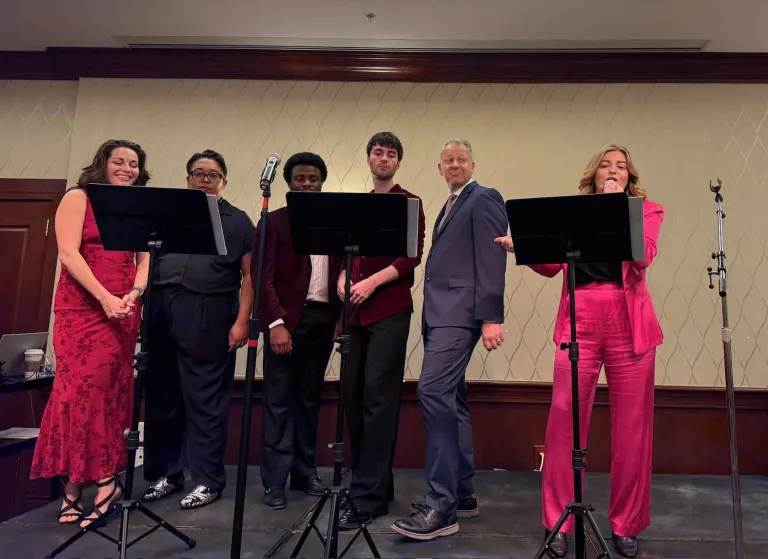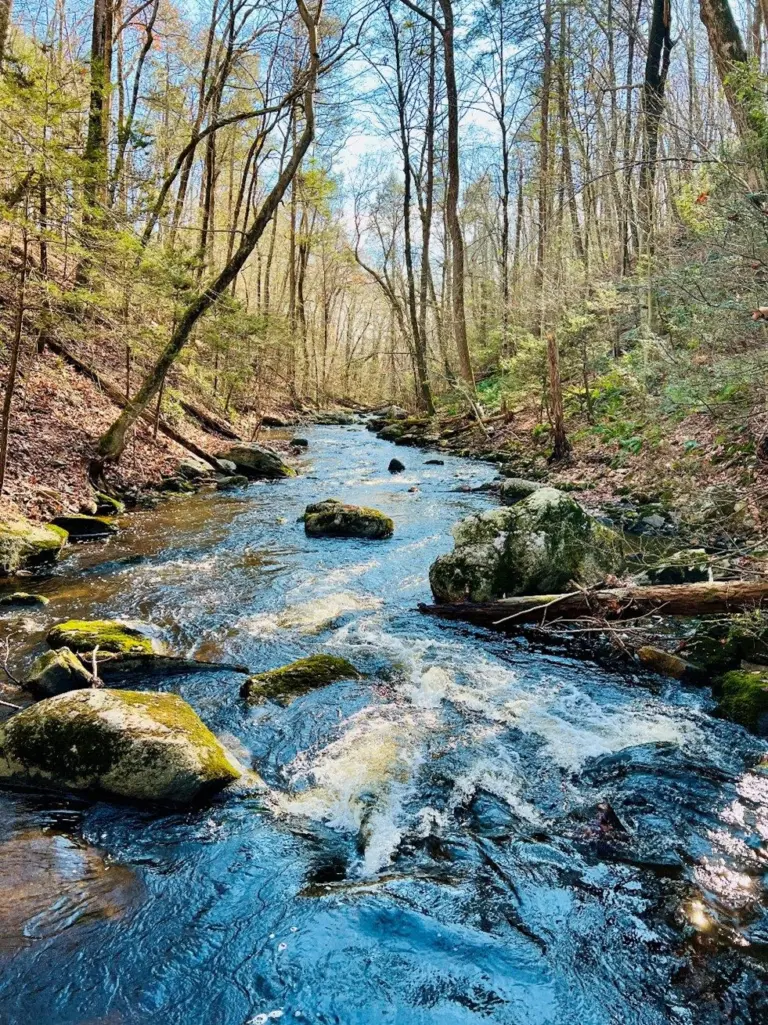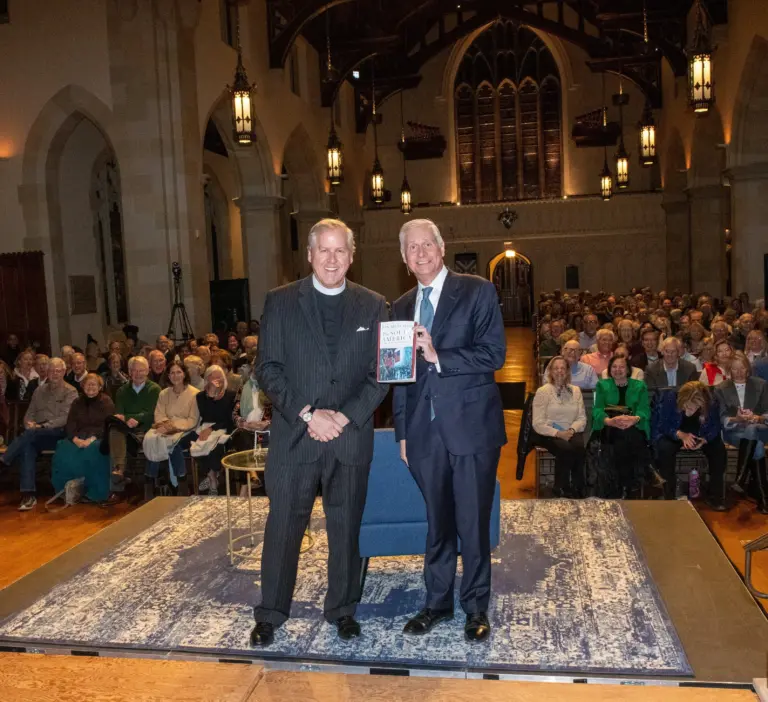Monday night, the U.S. Army Corps of Engineers presented the beginnings of a $35 million project that could potentially improve flooding concerns along the Byram River.
Congressman Jim Himes, First Selectman Fred Camillo, and their respective offices hosted the meeting in the Glenville Elementary School gym where the elected officials and Army Corps members discussed the project and other concerns with Greenwich residents.
Karen Baumert, an engineer and the plan formulator for the study, says the current height and central abutments of the US Route 1 bridges constrict and bottleneck the Byram River. The abutments catch debris and sediment which also restrict the flow of water.
The projected plan seeks to remove the current bridges one at a time, dredge the sediment underneath those bridges, and then reconstruct new raised bridges with no central abutment.
“The new US Route 1 bridges would be designed to carry the same traffic flow in the same location but have no central abutment and would be higher to reduce risk of flooding,” Baumert says.
“Not only does it decrease the extent, it decreases the level of flooding. For about a mile or 0.9 miles of those bridges, you’d see anywhere from a 1-4 foot drop in water surface elevation during a 1% or 100 year storm depending on where you are in the floodplain.”
The preplanning and design phase of the project is estimated to cost $5.47 million and the construction of the bridges would cost about $30 million. Baumert says that these new bridges would result in annual benefits that would be economically justified for the cost of the project.
According to Himes, the cost will be split 50/50 between money from the recent federal infrastructure bill and Greenwich. However, because the Route 1 bridges are shared between Connecticut and New York, the elected officials are looking into splitting the cost with New York State.
James Michel, the Greenwich deputy commissioner of public works, says he has had initial conversations with New York State and there’s been positive feedback on cooperation ”on sharing that funding of that 50%. Exactly what those numbers are is still to be determined but we’ve had those conversations and there’s definitely a commitment to work with the town.”
Baumert says the timeline of the project including signing and appropriations would take about two years to complete.
Several town residents expressed their concerns and frustrations about the recent damage caused by Hurricane Ida. Many called to fix drainage problems and demanded to dredge more parts of the Byram River and Caroline Place Pond.
Carl Griffasi, a town resident, said that a large majority of the homes in his area got flooded from the park which he says has a drain from 1930 and asked the town to bring the drain back up to code to help with flooding.
Joanne Carlucci, a town resident, said her daughter and grandchildren lost everything in the Ida flooding.
“You need to dredge the river because when I was a kid there was so much water in there, you could take a boat out on there. You could have thick ice to go ice skating. Now it’s all filled with silt. That’s was what was in my house, and that made everybody sick,” Carlucci remarked.
First Selectman Camillo shared his concerns and frustrations with flooding, saying he’s been meeting weekly about these issues and has been flooded out five times as well.
“This is not going to be settled tonight, tomorrow or next week,” said Camillo. “It’s going to take time. This is all over Fairfield county, they all have the same [problem]. Infrastructure problems with infrastructure that was built in the 80s or 90s.”
Baumert says the Army Corps did look into dredging areas of the river, but to significantly decrease water surface elevation in the event of a storm, the dredging would need to be combined with flood walls or levies “which would increase costs tremendously.”
Town officials said that future dredging projects would likely have to be funded by Greenwich and independent of the Army Corps. Himes clarified with Corps members that the town would need simple approval from the Army Corps only if dredging locations were on navigable waterways.
Several town residents also expressed traffic, construction and safety concerns.
“I don’t even believe that the bridges we’re about to spend $35 million dollars on will be able to handle traffic in a few years,” said Matthew Tyson, a town resident. “$35 million is going to be nothing when no one can live along that river.”
“We need to find out what New York State and Port Chester has done with respect to all this development,” Himes responded. “It would be a tragedy to rely simply on the Corps of Engineers who care about flooding, and it turns out we had an opportunity to build a bigger a bridge that we realize 10 years down the road we need”
The Army Corps team of engineers explained they chose the bridge construction because it was economically justifiable. However, if the town wanted to increase the size of the bridges to help traffic concerns, they are able to, but on their own dime.
“Nobody should celebrate until this is done. But what we just went through today with a study and a plan has never been done,” Himes concluded. “We’re not done but we’re a lot further along than we ever have been. And if things go well, sometime in the next few years, we’re going to have, what I hope to be, and what the hydrologists are telling us is going to be, a big change.”
For more information on the project visit: https://www.nan.usace.army.mil/Byram/ and https://www.greenwichct.gov/231/Byram-River-Feasibility-Study-Informatio




